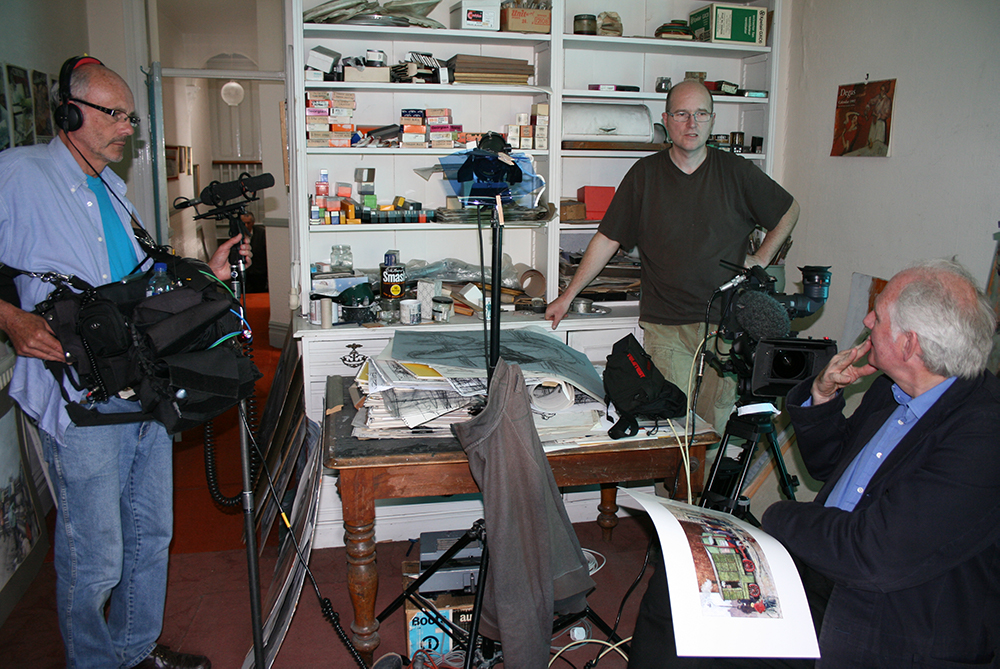Latest News
Ted Harrison
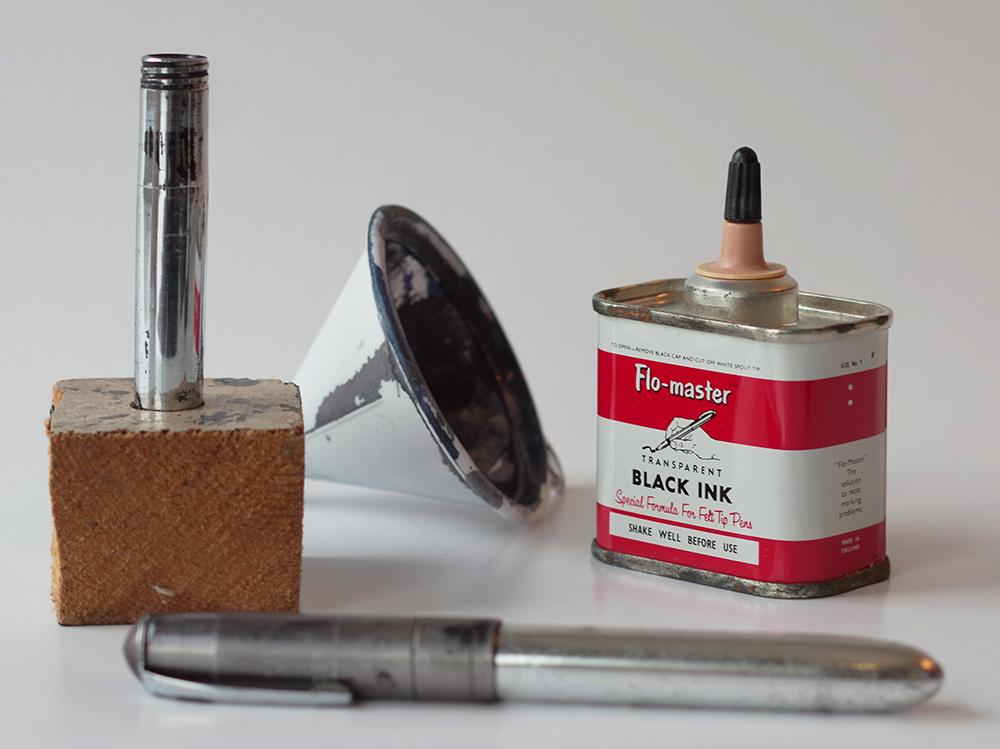
In 1947 Cornish was invited to exhibit in the ‘Art by The Miner’ exhibition at the Academy Cinema in Oxford Street, London, to be opened by Prime Minister Clement Attlee. Cornish actually hung the exhibition and in some spare time he visited the Reeves shop in Camden Town. It was during this visit that he first encountered the Flo-master Pen, nibs and ink; but sadly, he was unable to afford the cost of buying the pen.
Such was Cornish’s growing reputation that in 1951 he was invited to a weekend course at Wallington Hall, Northumberland, as a guest tutor along with John Minton and Harry Thubron, two very experienced artists and tutors with national reputations. One of the participants at Wallington Hall was the slightly younger Ted Harrison who was born in 1926 in Wingate, County Durham. Ted started to paint at West Hartlepool School of Art and after the war he qualified as a teacher from the University of Durham. Ted found his formal training uninspiring and rather disappointing. Undeterred, he and Cornish, whom he referred to as ‘Cornbags’ became both contemporaries and personal friends often visiting each other at their respective homes, and Ann and John Cornish have many happy memories of meeting and enjoying the company of ‘Uncle Eddy’ and his flamboyance, as well as his interesting art in unusual locations around his family home in Wingate.
Ted would also visit Norman and Sarah Cornish at Bishops Close Street where Norman and Ted would nip along the road to The Bridge Inn at the end of the street and enjoy a pint, drawing characters in the pub, and discussing art, literature and philosophy.
Ted emigrated to the Yukon in Canada in1967 and thereafter became one of Canada’s most famous artists and the recipient of three Honorary Doctorates as well as a member of the Order of Canada for his contribution to Canadian culture. Both artists maintained their contact via regular correspondence which is now located in the Northumbria University archive.
Ted Harrison was very grateful to Norman Cornish for inspiring his life long quest to paint people and places. Norman Cornish was eternally grateful to Ted Harrison at that first meeting at Wallington Hall, when Ted purchased something for Cornish which enabled him to take his drawings to a new and exciting level – a Flo-master Pen. The rest is history, and the quality of Cornish’s drawings has been compared, ‘as good as any other artists in history’ - Andrew Festing, former President Royal Society of Portrait Painters.
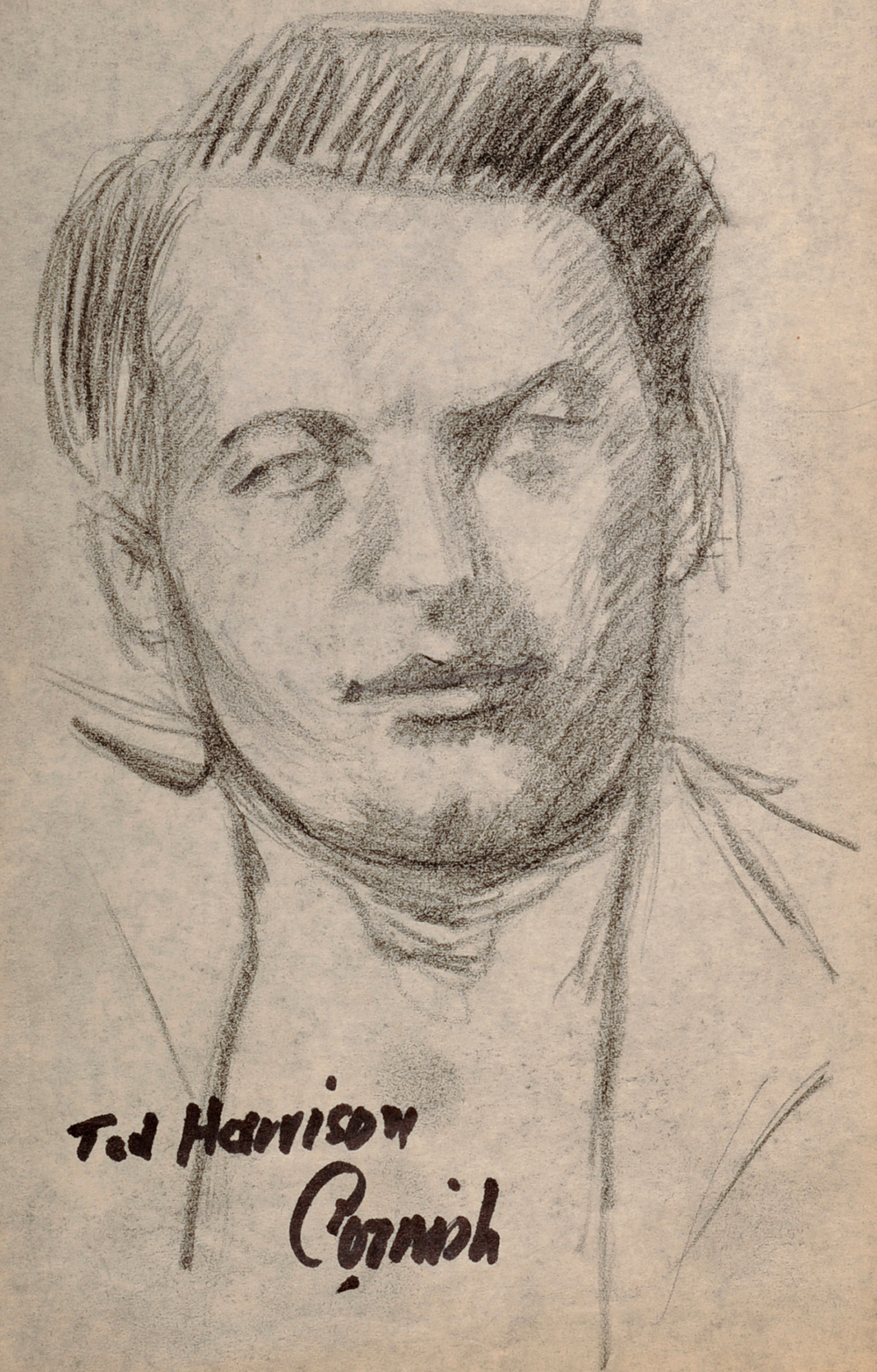
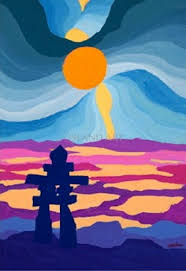
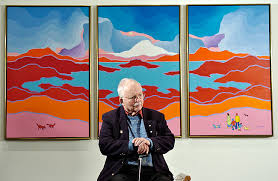
The Perfect Pint:
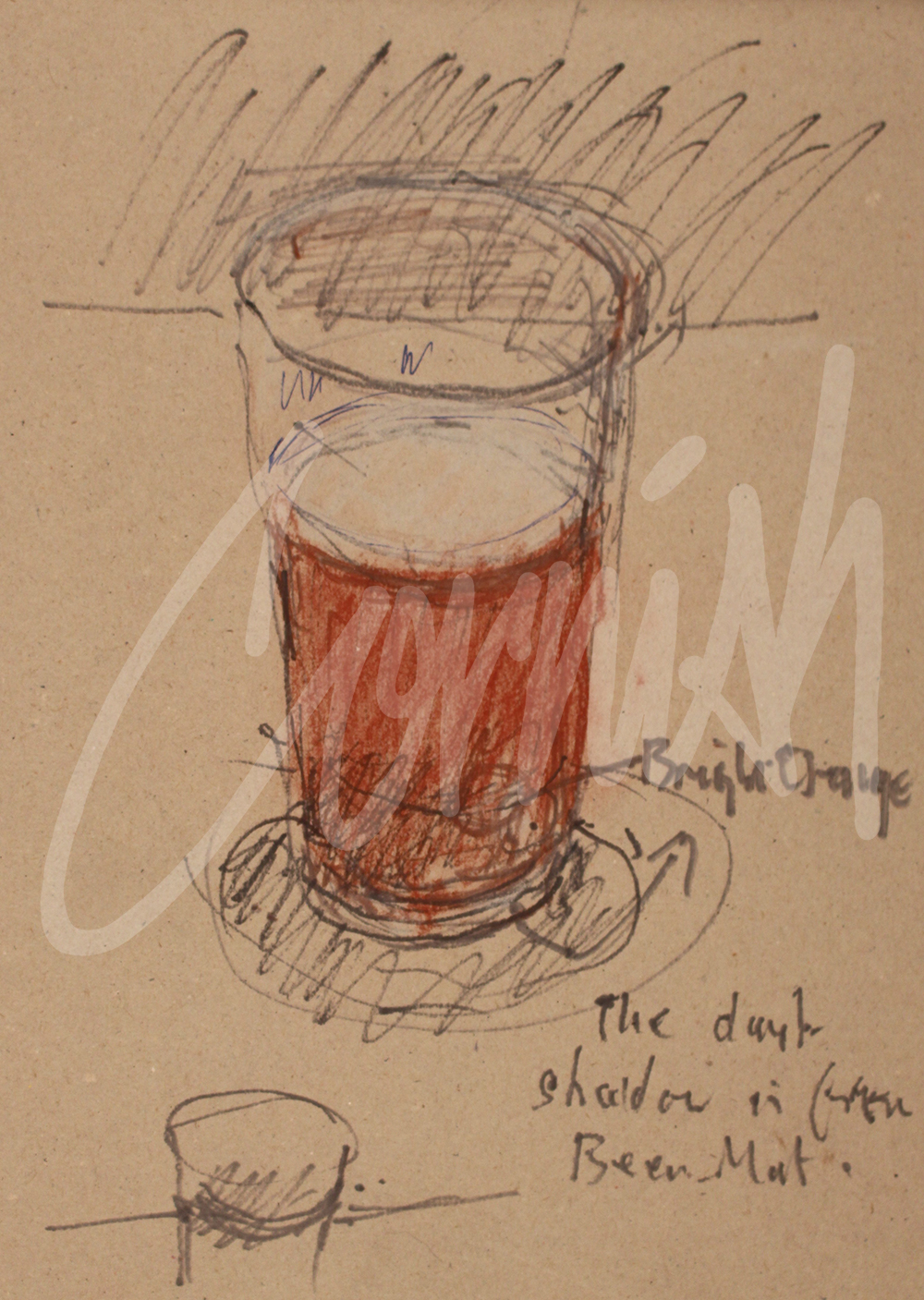
Cornish was advised at an early age to ‘draw and paint the things he knew around him.’ One of the surprising discoveries in Cornish’s 269 sketchbooks were his drawings of a ‘pint of beer.’
There are numerous examples in his sketchbooks and each includes references to colour notes, light, shade and other observational notes. The examples of beer glasses in bar scenes, with the contents at various stages of consumption or empty behind the bar are actually technical studies in their own right for a specific purpose.
Sometimes they appeared in the large bar scenes, but also with small groups of men or individuals, deep in thought with a pint.
Mining was physically hard work and the many pubs in towns and villages not only provided places to meet socially but also served a purpose to quench the thirst of the miners who had worked shifts of eight hours underground.
In his own words: “The accent is on atmosphere which contrasts the earthy humanism with the mysterious glitter of the beer and the glasses.”
No pitman’s home was far from a pub and there were 37 pubs in Spennymoor itself and a similar combined number in the surrounding villages.
Art critic Alistair Gilmour observed, “ Norman understands the pleasurable invitation that lies in a freshly pulled pint following a hard and dirty shift down the pit. You wipe away the first moustache of froth with the same hand gesture that wipes away the grime of the day.”
The bar scenes and character drawings in pubs, playing dominoes, darts, and enjoying ‘the craic’ feature as one of the chapters in Behind The Scenes; The Norman Cornish Sketchbooks, with many examples from this popular theme. Available in our online store.
For the record, Cornish’s favourite was a pint of Newcastle Brown Ale which he continued to enjoy with visitors in his final years.
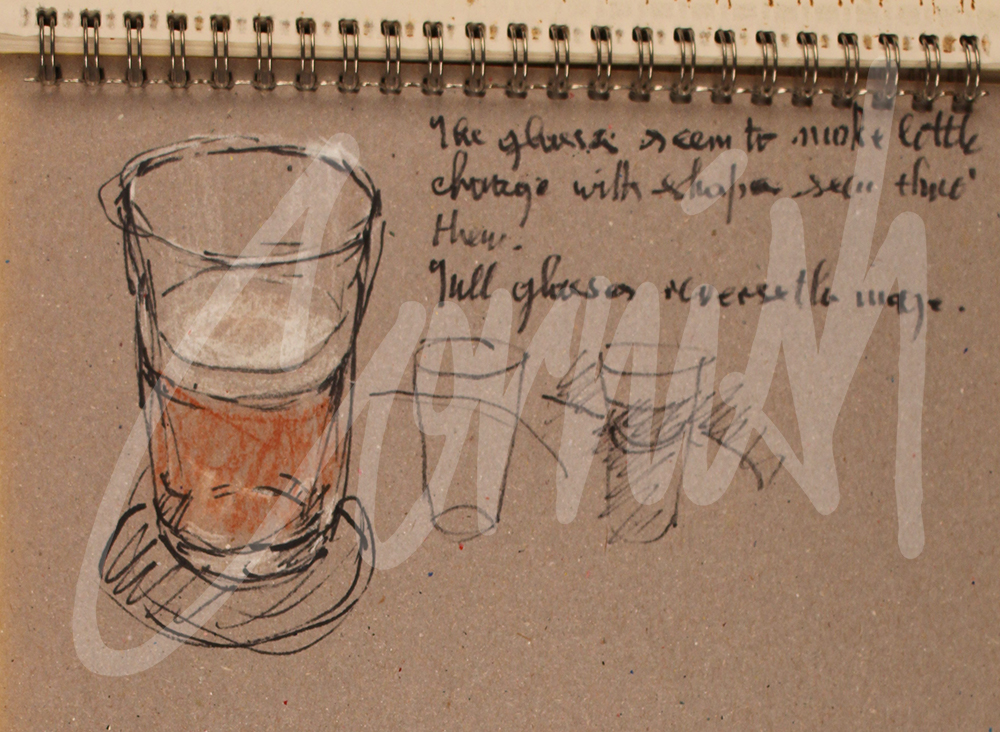
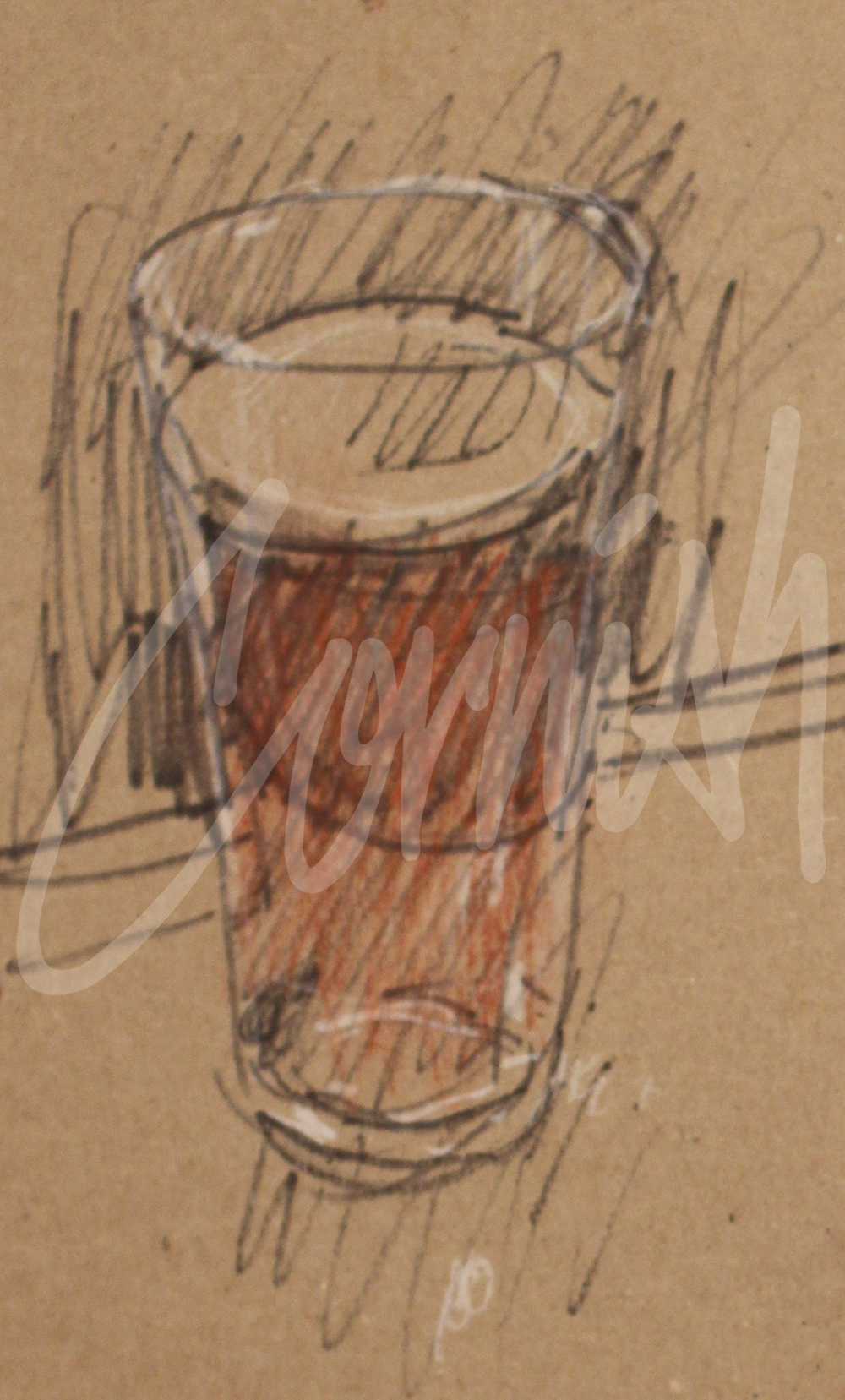
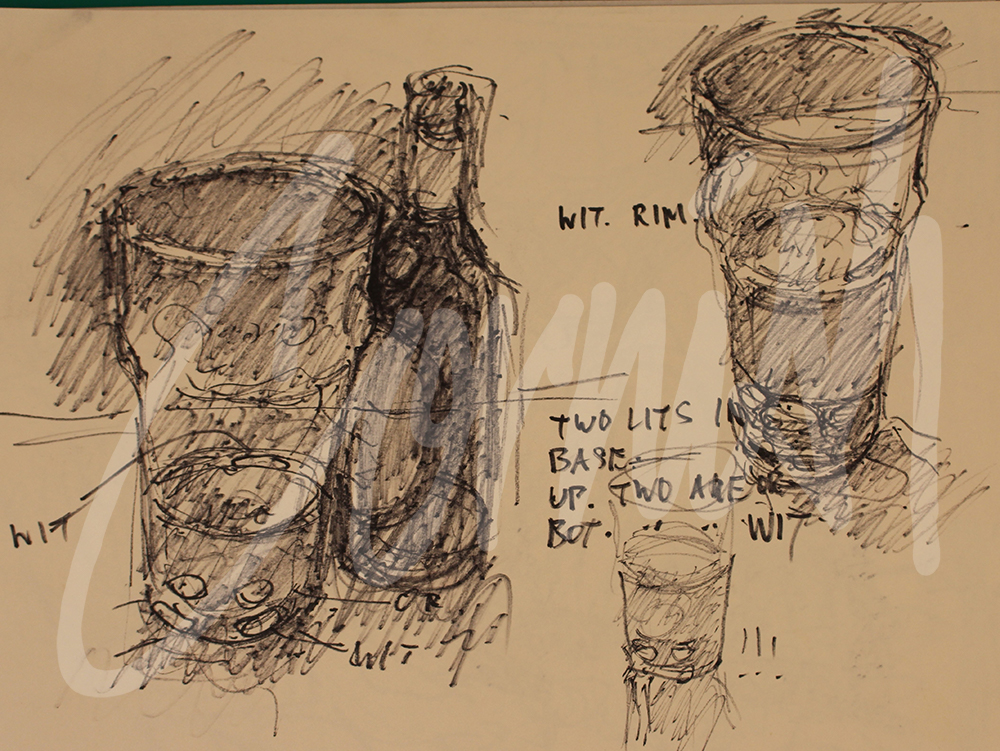
Umbrellas:
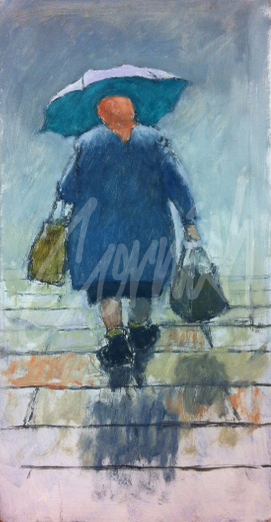
Accompanied by a family member in his later years, Cornish would occasionally make the journey to Newcastle to visit either the Northumbria University Gallery or to Details, an art materials shop, situated near the Central Railway Station, within the Newcastle Arts Centre on Westgate Road.
The journey by car always travelled along the A167, through Low Fell, past the junction for the Shipley Art Gallery and along Durham Road, whereupon, without exception, on every occasion, he would point out the location of one of his favourite paintings. The former pedestrian crossing, subsequently removed, was the subject showing a lady with an umbrella, struggling against the wind. Interestingly, there is a large and rather ominous pointed shape extending vertically at the side of the picture, simultaneously intersecting the horizontal lines of the pedestrian crossing and vertical lines of the railings.
The pointed shape is actually the steeple of St Mark’s Methodist Church at the roadside and a short distance from the Shipley Art Gallery. Cornish’s fascination with the shapes of umbrellas, their owners and the many different occasions and situations which provided inspiration for him, is very well represented in ‘Behind The Scenes :The Norman Cornish Sketchbooks,’ where 16 examples are included in the section about observations of people, including preliminary sketches and completed paintings.
In his own words: On a wet day in Spennymoor, waiting for a bus and talking about Spennymoor and painting, he looks at the queue, mostly young women; “Les parapluies, look at that petrol puddle on the road. Pure Renoir.”
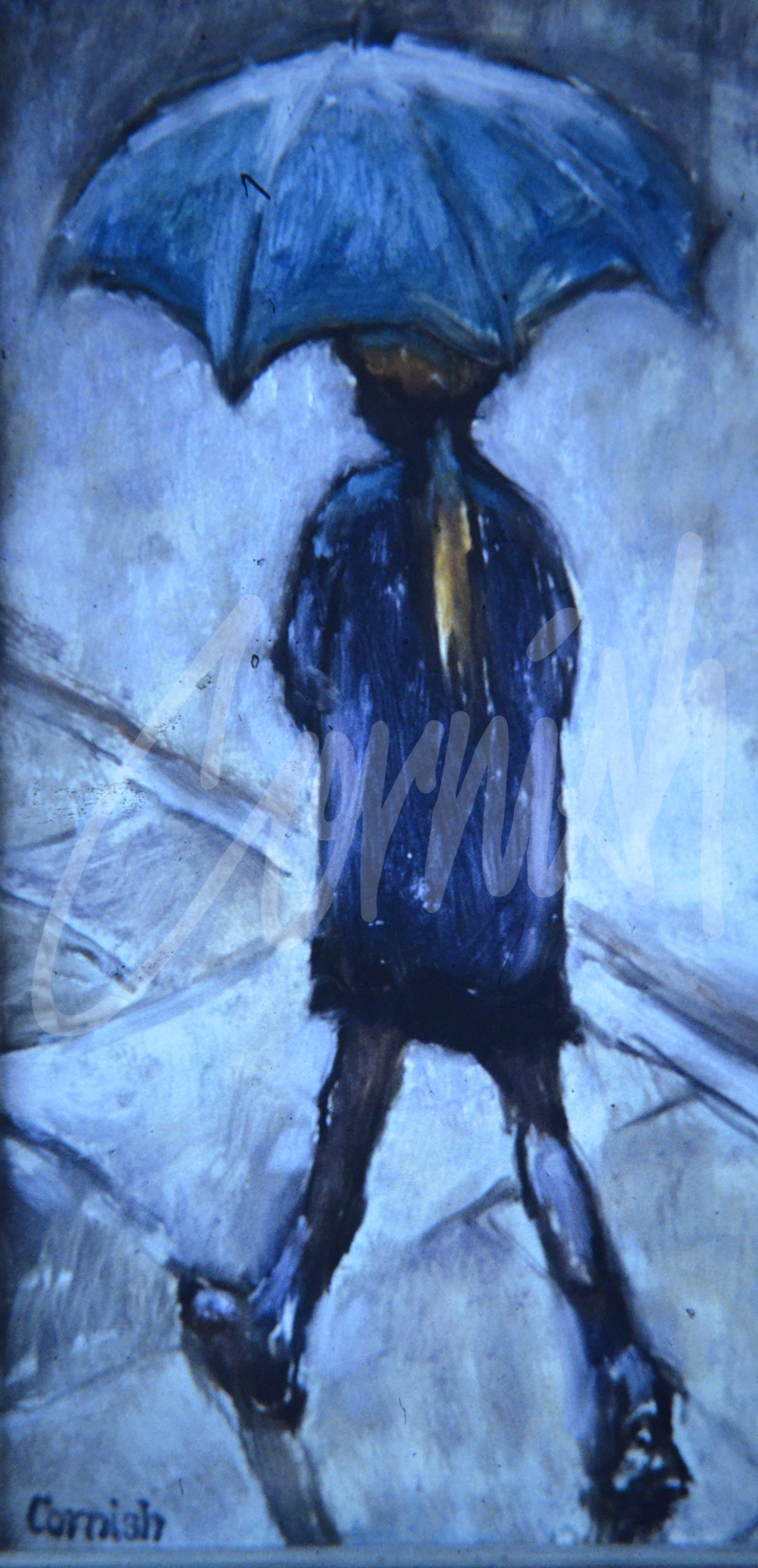
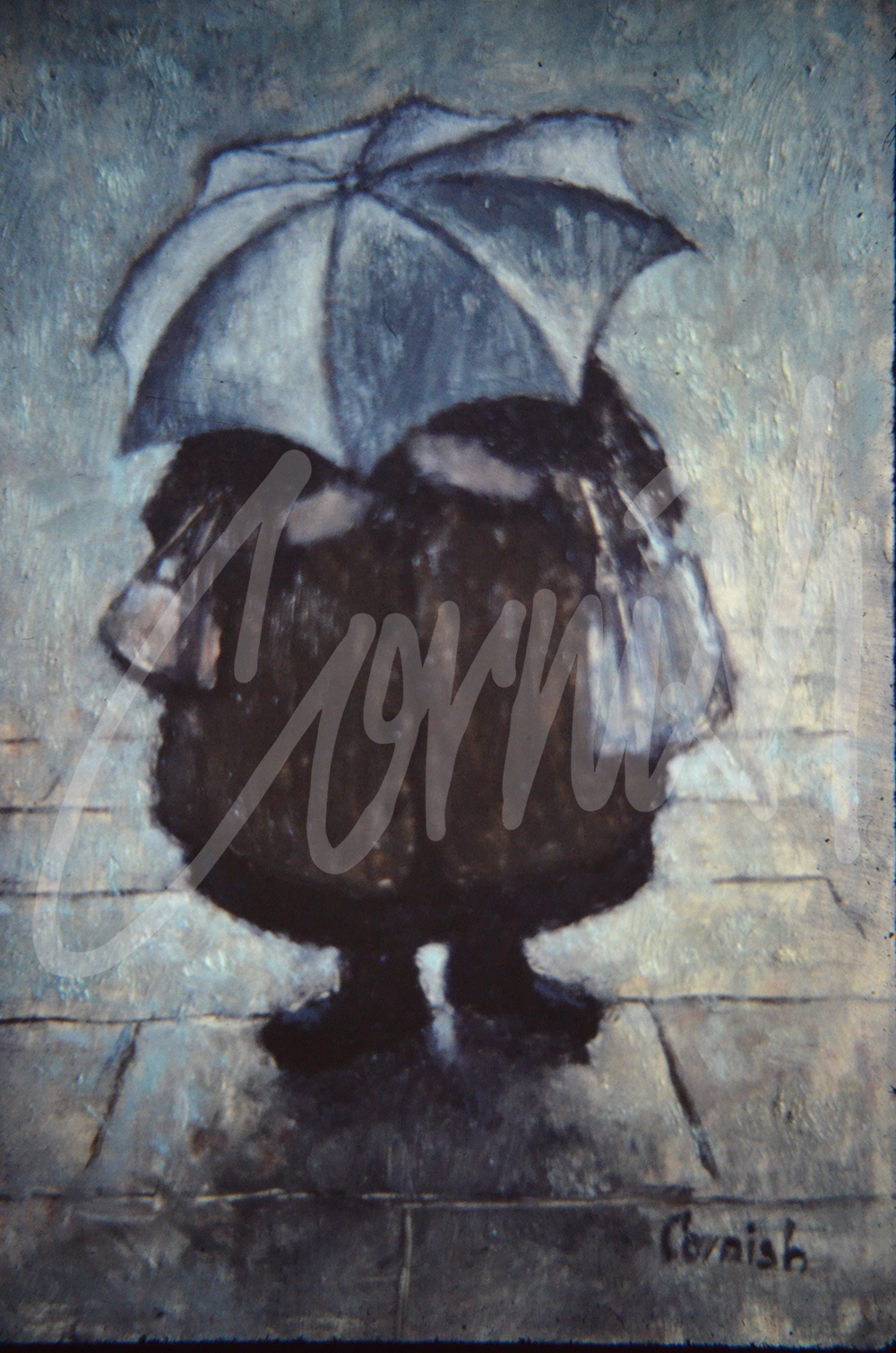
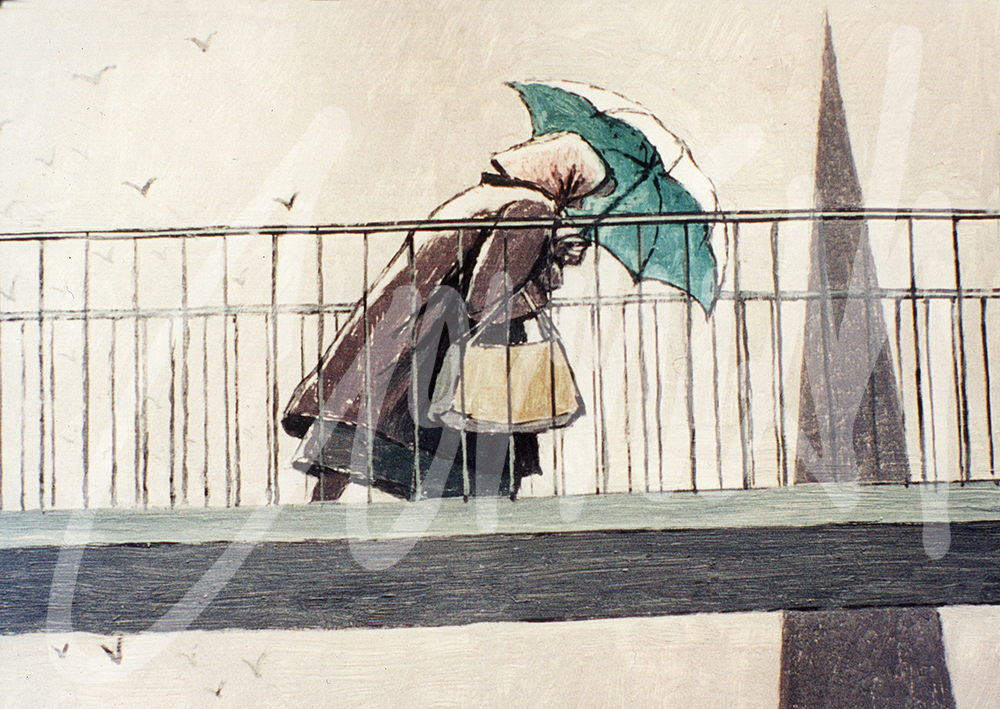
The Crucifixion:
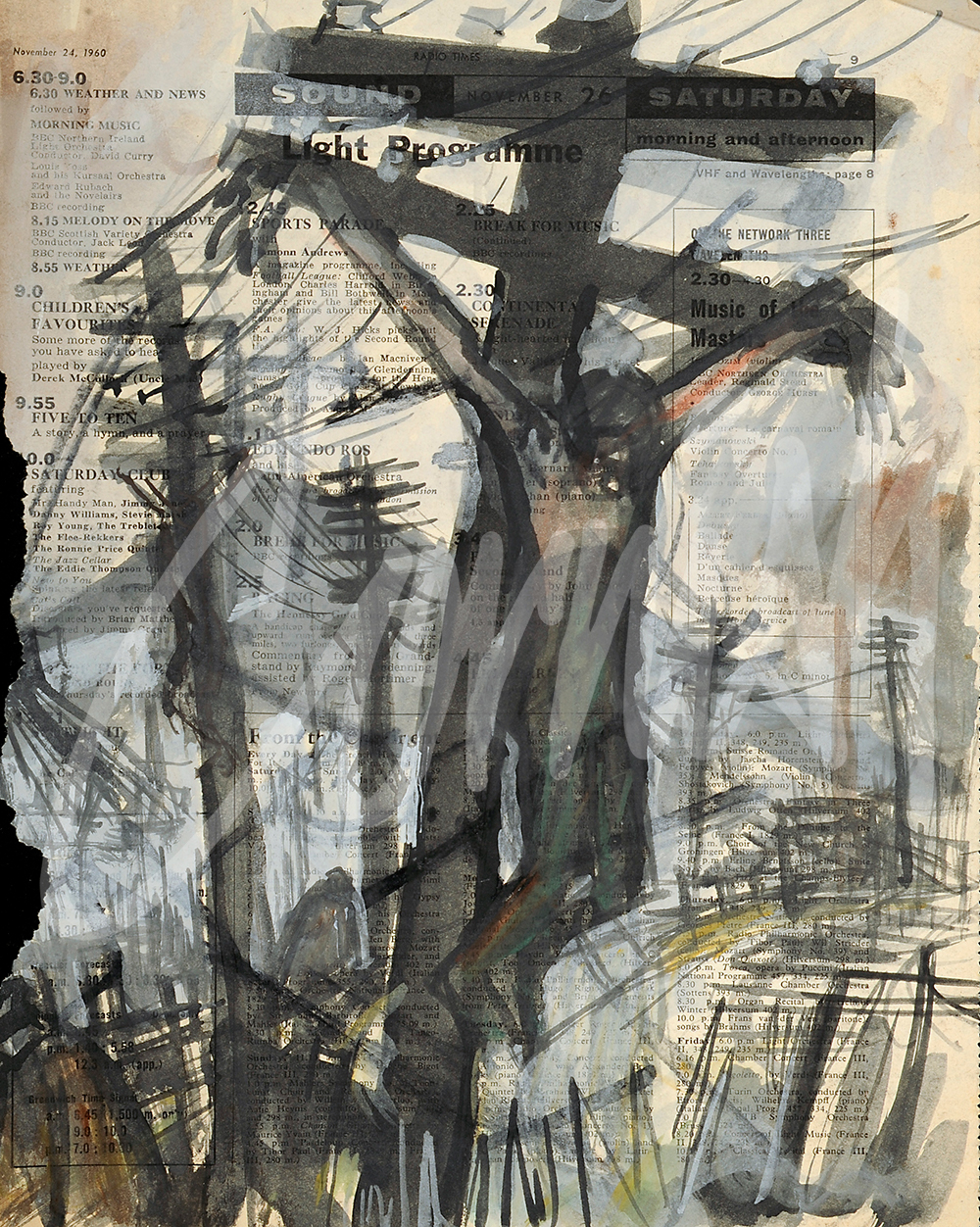
In 1919, the year of Cornish’s birth , there were a million miners in Great Britain. Almost a quarter of them , some 223,000, worked in the North east of England. The landscape was dominated by mining and the Dean and Chapter Colliery employed 2,135 men working underground and 538 above ground working three pits extracting coal from five different seams. Three thousand tons of coal were produced every day with only a third of it machine mined and the rest hand hewn. During the lifetime of Dean and Chapter Colliery there were 177 fatalities and the pit was known locally as ‘the Butcher’s Shop.’ Cornish worked for most of his 30 years as a miner, underground, and it is hardly surprising that the impact of this experience was to shape and influence his perception of the life and times around him.
His record of the journey to work and working underground is captured in so many variations of the mining themes synonymous with one aspect of his broad range of subject matter.
In his own words: “Suddenly, the man comes to a telegraph pole, it leans menacingly above him. It is an arm holding up many voices, He now also looks like a crucifix, and serves to remind him somehow of the price that man pays for his apprenticeship. Mankind has to suffer many accidents in his quest for technical miracles.”
“All of these poles thrusting up at the side of the road –they’re like a series of crosses and sometimes I look at them as I walk along and they’re not telegraph poles anymore- they are crucifixions and on every one of them there’s a miner hanging crucified.”
Cornish’s work has been described as genre painting, social realism and impressionist, with expressionist tendencies, but the labels become irrelevant when there is honesty and emotion in his depiction of everyday life in mining communities. There are also examples of symbolism where his feelings about the experience of miners are represented by his depiction of a crucifixion, as his emotions evolved from his shared experiences of being ‘treated like slaves,’ and ‘spoken to like convicts.’ His depiction of a crucifixion was quickly drawn and coloured onto a ripped sheet of the Radio Times (1960), probably during a period of high emotion, mental anguish and deep frustration.

The Shapes of Cornish:
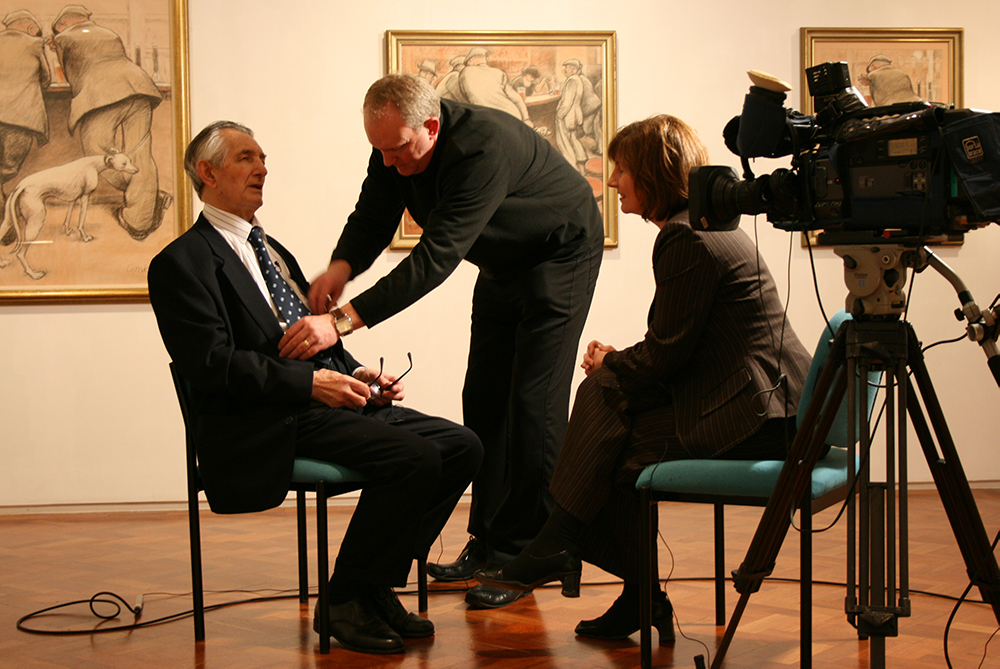
The post war era was a period of expansion and interest in the arts which were provided regionally and nationally by an ongoing series of public exhibitions. Some were promoted by organisations such as CAMDIN (Council for the Encouragement of Art, Music and Drama in Northumberland) and others by emerging arts organisations such as The Cumbria and Borders Artists Association.
In 1947 Cornish exhibited 7 paintings in the exhibition, ‘Art by The Miner’, Academy Cinema, Oxford Street ,London as part of a broader exhibition, and ‘The Miner Comes to Town’ which was opened by the Prime Minister, Clement Attlee. This visit to London also marked Cornish’s first TV appearance on the BBC programme, ‘Picture Page’, broadcast live from Alexandra Palace Studios.
Further television and radio broadcasts were to follow throughout this period with interest from the BBC and the emergence of Tyne Tess Television in the late 1950s.This was a time of increasing exposure and public interest via exhibitions and both regional and national media. This was a deepening dilemma, as Cornish continued to work underground as a miner. There was increasing public demand for his time, his paintings and drawings. The following examples illustrate the TV and Radio interest from the days when the number of TV stations was limited and radio programmes restricted to the BBC.
- 1961 – Tyne Tees TV, ‘Your Kind of Music ‘– compared by Spike Milligan, Cornish’s works compared to those of Toulouse Lautrec.
- 1963 – BBC Radio, ‘A Good and Comely Life’ interview with John Braine, Sid Chaplin, Len Doherty and John Peace.
- 1963 – BBC Monitor- ‘Two Border Artists’ Norman Cornish and Sheila Fell, introduced by Sir Hugh Weldon, produced and directed by Melvyn Bragg.
- 1965 – Tyne Tees Television - ‘The Richer Life The Artists and The Region’
- 1966 - Tyne Tees Television – ‘Cornish in Paris’ produced by Frank Kilbride, presented by Bob Langley.
- 1968 - Tyne Tees Television – ‘Abroad with Behan’ interviewed by Dominic Behan.
- 1975 - BBC One Omnibus - ‘Shafts of Sunlight’.
- 1976 - Tyne Tees Television - ‘Shapes of Cornish’ Lifestyle programme.
- 1977 - Tyne Tees television - ‘About Britain Shapes of Cornish’ broadcast nationally.
- 1988 - BBC ‘Scenes from Working Lives’ - Melvyn Bragg.
- 1989 – BBC - ‘Two Border Artists’ re-launched with Stanley Spencer, Graham Sutherland and NS Cornish.
- 2006 – BBC series ‘Flog It!’
- 2010 - Tyne Tees Television Studio Interview with Robson Green.
- 2011 - BBC 2 documentary with Dan Cruickshank studio interview.
Several exhibitions at the University of Northumbria Gallery also featured ‘live broadcasts’ across the region, and Cornish was always very grateful for the support he received from the broadcasting media. The complete collection of radio and television programmes forms part of the archive at Northumbria University and at some point in the future the material may become available for research projects.
Meanwhile – in 2016 The British Film Institute released ‘Shapes of Cornish’ as part of the Tyne Tees television archive and it is available to view on line (free) by clicking here or via the player below.
